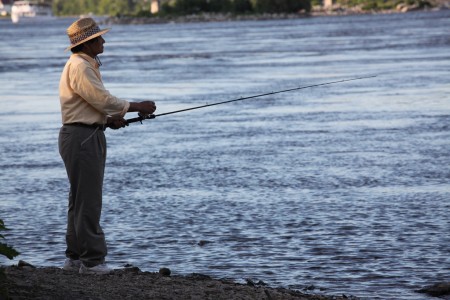
After thoroughly enjoying his free psychology course, available on iTunes U, I was excited to read Yale professor Paul Bloom’s new book: How Pleasure Works: The New Science of Why We Like What We Like. It was certainly very interesting. Though it may not quite have met my high expectations, the book certainly has a number of substantial strengths. It includes both original insights and a useful presentation of the research undertaken by others. Indeed, the book’s greatest strength is probably its accessibility. There is little jargon, terms are clearly defined, and good analogies and explanations are employed throughout.
Bloom’s main hypothesis is that people are ‘essentialists’ and that this has importance for what people enjoy. This concept has a bit of a Platonic flavour, as Bloom explains:
The main argument here is that pleasure is deep. What matters most is not the world as it appears to our senses. Rather, the enjoyment we get from something derives from what we think that thing is. This is true for intellectual pleasures, such as the appreciation of paintings and stories, and also for pleasures that seem simpler, such as the satisfaction of hunger and lust.
Perhaps one reason why I found the book a touch disappointing is that this thesis seems uncontroversial to me. Bloom does bring up some interesting examples and related experiments, but never really sets out a credible alternative theory well distinguished from this ‘essentialist’ view. Perhaps his most interesting argument is that essentialism – the desire to understand the ‘real nature’ of things, and the related assumption that there is such a thing – is inherent, even in children, and not the product of socialization.
Bloom takes a thematic approach: discussing food, sex, objects with histories (like JFK’s tape measure), performance, imagination, safety and pain, and finally the respective appeal of science and religion. His discussions of imagination are one of the most interesting parts of the book, as the author teases apart the different ways in which imagination is useful and pleasant, as well as discussing the limitations it has (such as how we cannot surprise ourselves while daydreaming). His discussion of the importance of evolution to psychology, as well as the processes through which the mental life of children changes as they grow up, are also particularly worthwhile and interesting. While it is not a novel argument, Bloom also provides some nice illustrations of how the human mind evolved in a world very different from the one that now exists, with important consequences for individuals and society.
One thing that sticks out at times are little judgmental comments made by the author. They are all very justifiable, but they do stand out within a work that is largely a summary of scientific research, albeit one written in a manner intended to be accessible to non-expert audiences. For instance, Bloom repeatedly condemns the obsession people have with female virginity. He also talks about steroids in sports, the power of stories to inspire moral change, ‘evil’ in video games, the dangers of awe in relation to political figures, and ‘immoral’ pleasures. A few of Bloom’s claims also stand out as being unsubstantiated, particular several assertions he makes about non-human animals, without reference to either logical argument or empirical evidence to support them. All told, Bloom stresses strongly that humans are quite different from other animals, though he arguably fails to provide adequate evidence to make that claim convincing.
Another thing you won’t find in Bloom’s book is much concrete advice on how to live a happier life. If there is anything of that sort in the book, it is arguments that might make people feel less irrational for taking pleasure in things that are a bit unusual: whether it is collecting objects formerly owned by celebrities or paying somebody to tie you up and beat you.
To his credit, Bloom also considers the logical errors that can arise from the intuitive essentialism that people manifest. He argues that it contributes to some of the basic errors of logical deduction and probabilistic reasoning that people commonly make – and which are exploited equally by advertisers and despots. Bloom highlights how many of the aspects of our minds that evolved for certain purposes have ended up creating other social phenomena by accident, from obesity to paranoia about terrorism and serial killers.
While the book is full of interesting tidbits and pieces of information, the overall thesis is a bit of an overcautious one. Perhaps that is something to be expected from a scientist, given their hesitation to go beyond claims that can be clearly justified by the facts. Nonetheless, this book is a worthwhile discussion of the nature of human pleasure, from a scientific and psychological perspective. For anyone with an interest in seeing the topic treated in that manner, it is definitely worth a look.











